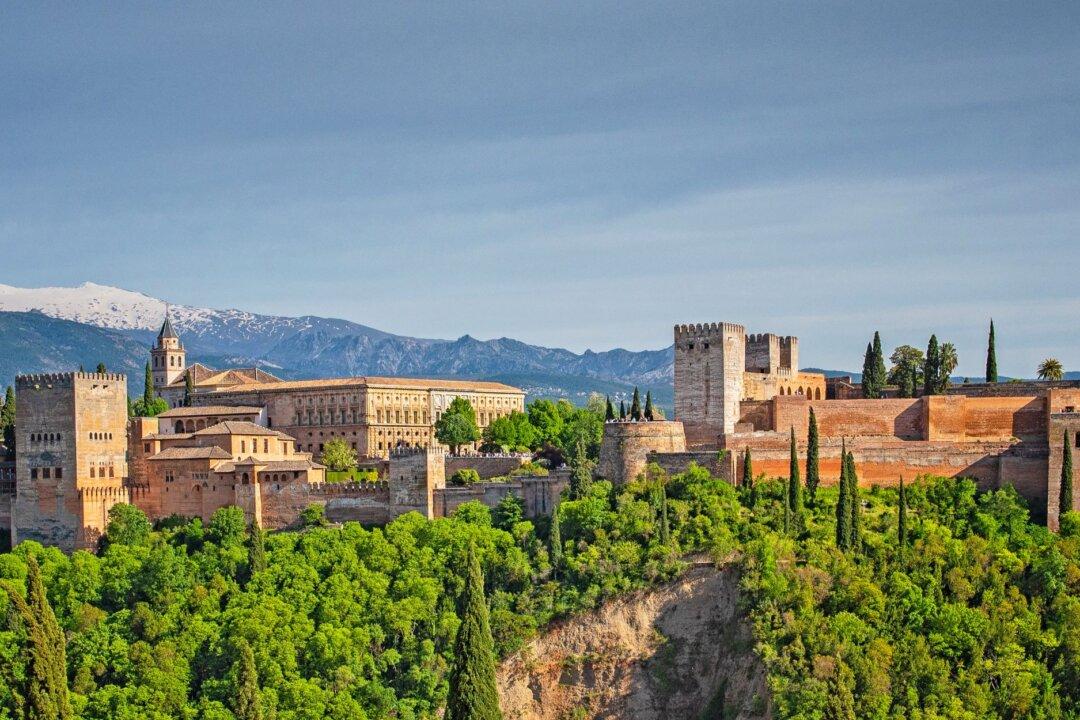In the historic city of Granada, in the autonomous community of Andalusia, Spain, the charming streets and steep hills are filled with the scent of tapas and the sound of flamenco music, all of which rise to the Alhambra palace, a majestic Moorish fortress above the city.
What American author Washington Irving called “the abode of beauty” in his “Tales of the Alhambra” (1832) is a magnificent complex of medieval and Renaissance residential palaces and courtyards within a walled fortress. Built between 1238 and 1358, the fortress is composed of three restored palaces, all constructed in the 14th century: the Partal Palace, the Palace of the Lions, and the Comares Palace, which are all connected by paths, gardens, and courtyards.






